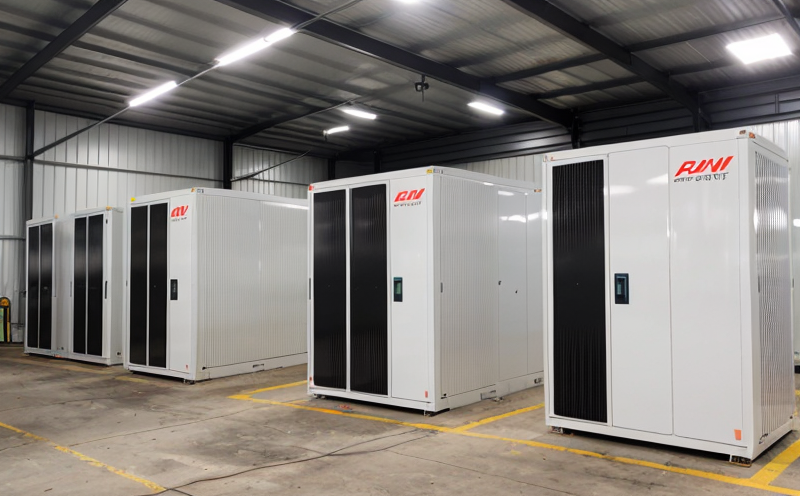ASTM D257 Insulation Resistance Testing of Battery Systems
The ASTM D257 insulation resistance test is a critical procedure used to evaluate the electrical insulating properties of materials commonly employed in battery systems. This test ensures that the insulating layers within batteries are effective, which is essential for preventing short circuits and ensuring safe operation.
In battery systems, insulation resistance plays a pivotal role in safeguarding against potential hazards such as overheating or degradation due to excessive current flow. The test involves subjecting the insulating materials to an alternating voltage while measuring the leakage current. A higher insulation resistance indicates better electrical isolation between conductive parts and non-conductive areas.
The ASTM D257 procedure is particularly important for ensuring compliance with international standards such as IEC 61851, which specifies safety requirements for the installation and operation of low-voltage power systems. This test helps in verifying that all components meet these stringent safety criteria before deployment in renewable energy projects.
During specimen preparation, it's crucial to select appropriate samples that represent the insulating materials used within the battery system. These samples should be cut from the actual parts of the battery where insulation is critical. Properly preparing and conditioning these specimens ensures accurate test results reflecting real-world conditions.
The testing apparatus typically includes a high-precision voltage generator capable of delivering controlled alternating voltages, along with precision measuring devices for recording leakage currents. These instruments must be calibrated regularly to maintain accuracy throughout the testing process.
Acceptance criteria for ASTM D257 test results depend on the specific application and type of battery system being evaluated. Generally speaking, insulation resistances exceeding certain thresholds indicate acceptable performance levels. For instance, in large-scale energy storage systems, higher resistance values contribute to enhanced safety margins against electrical faults.
Understanding how this testing contributes to overall system reliability is key for stakeholders involved in designing and manufacturing battery products. By adhering strictly to ASTM D257 guidelines during production stages, manufacturers can significantly reduce risks associated with improper insulation leading to failures or accidents.
Applied Standards
- ASTM D257 - Standard Test Method for Determining Insulation Resistance of Electrical Insulating Materials
- IEC 61851 - Safety of Low-Voltage Power Systems
- EN 50364 - Protection Against Electric Shock in Domestic Environments
These standards provide comprehensive frameworks for conducting insulation resistance tests, ensuring that all procedures are consistent across industries and regions. Compliance with these guidelines enhances trust among consumers by demonstrating adherence to recognized best practices.
Industry Applications
The ASTM D257 test is widely utilized in various sectors, including renewable energy, where it plays a crucial role in assessing the integrity of insulating materials within batteries. This includes both lead-acid and lithium-ion types commonly used in solar power installations and electric vehicles.
In these applications, maintaining high insulation resistance levels helps extend the lifespan of battery systems while minimizing maintenance costs. Properly conducted ASTM D257 tests ensure that only reliable components enter into service, thus improving operational efficiency and safety standards across the industry.
Quality and Reliability Assurance
- Consistency in Test Results: Ensures accurate measurement of insulation resistance over time.
- Compliance with Standards: Verifies adherence to industry best practices for safer operations.
- Precision Instrumentation: Utilizes calibrated equipment to provide reliable data.
Implementing ASTM D257 testing protocols contributes significantly to maintaining high-quality standards in battery manufacturing. Regular inspections using this method help identify potential weaknesses early on, allowing for timely corrective actions that prevent costly repairs later down the line.





